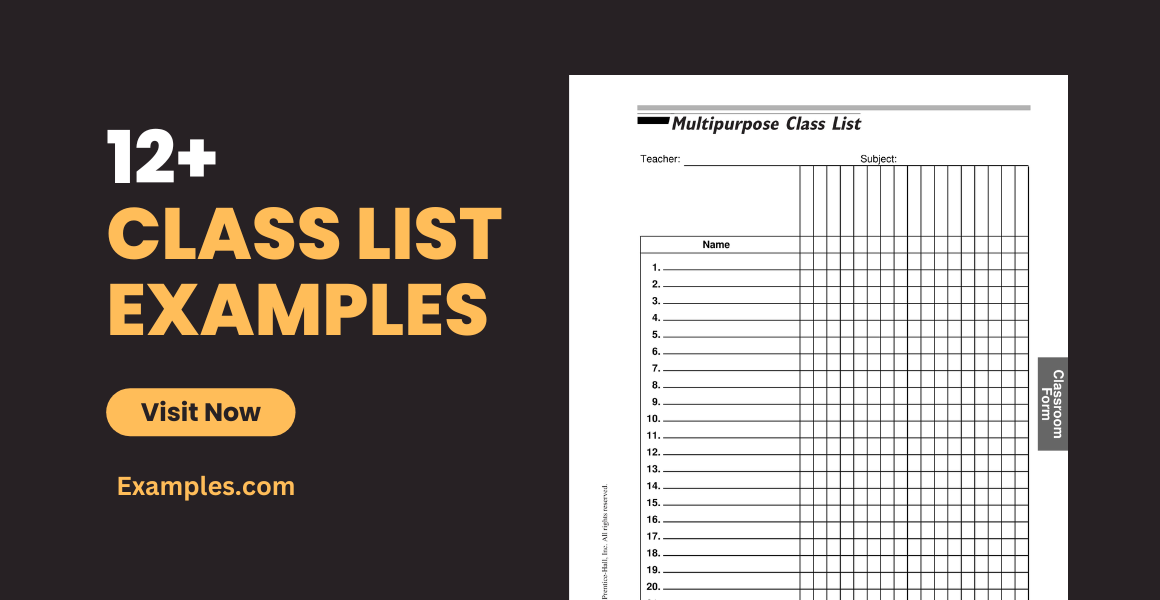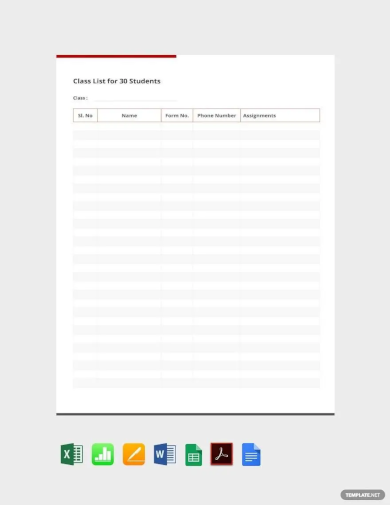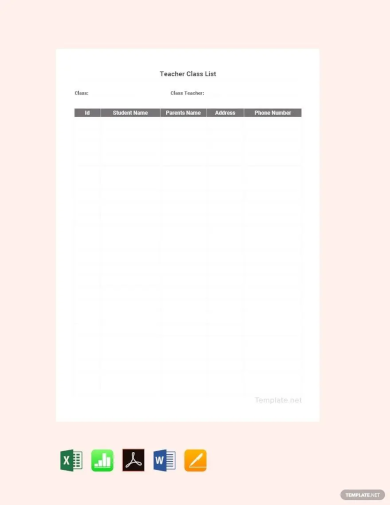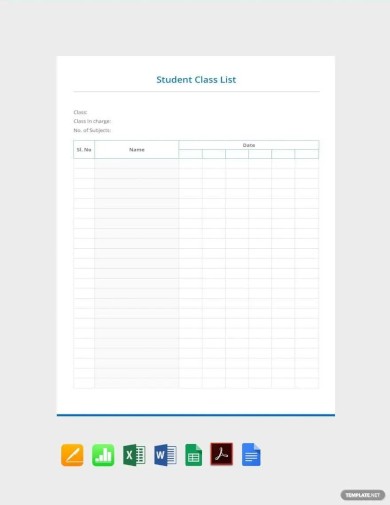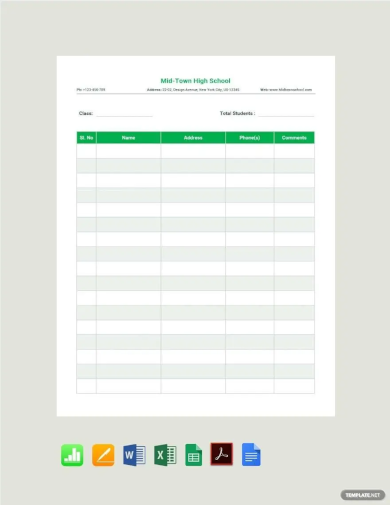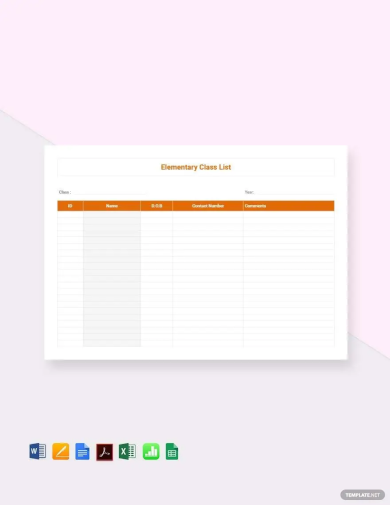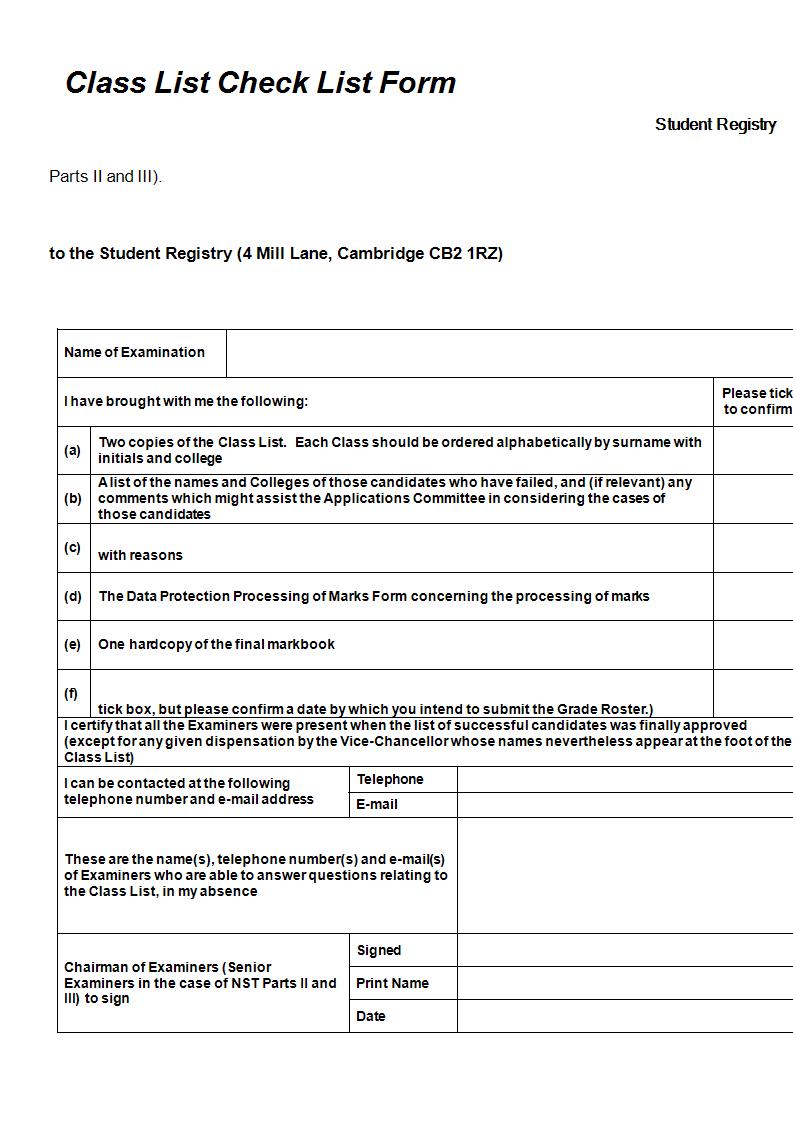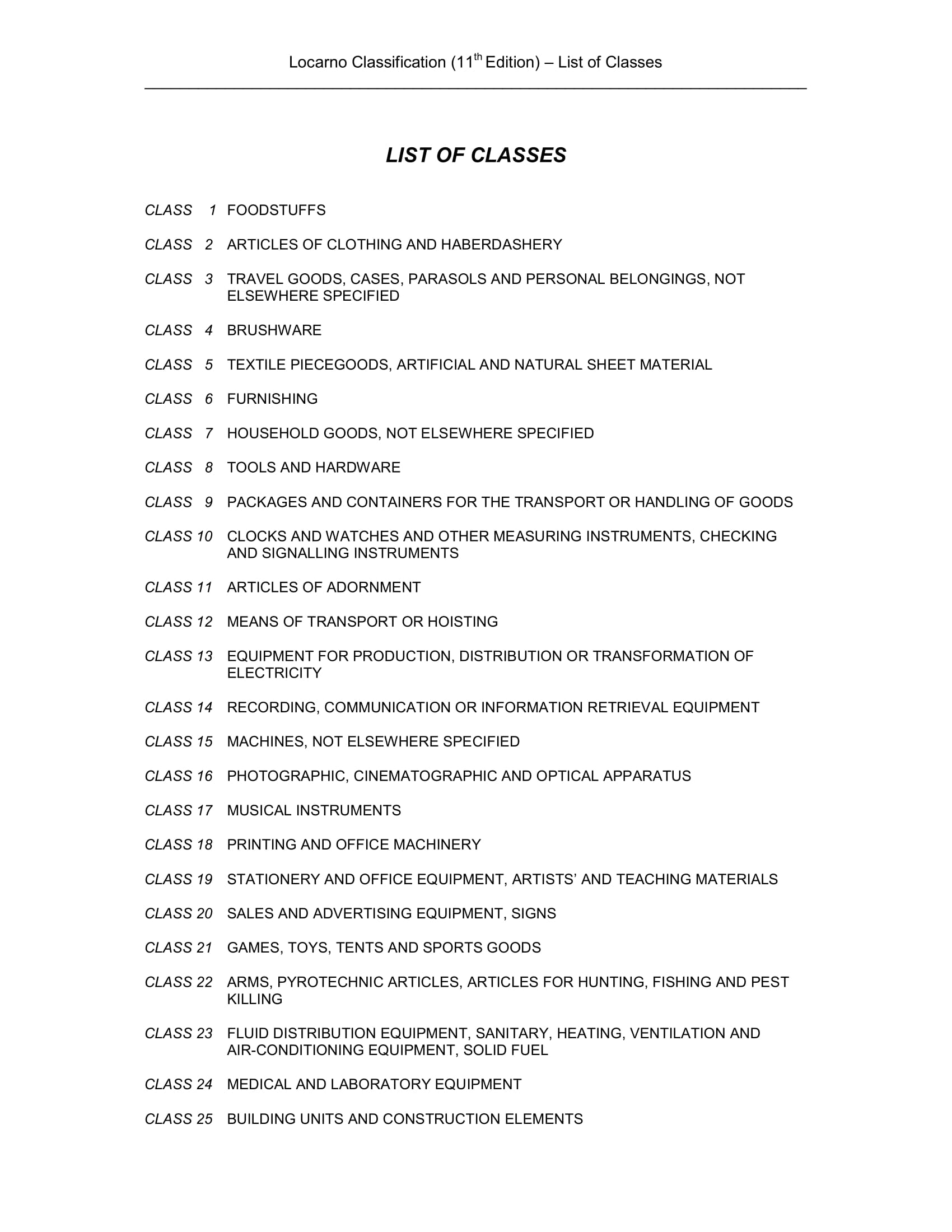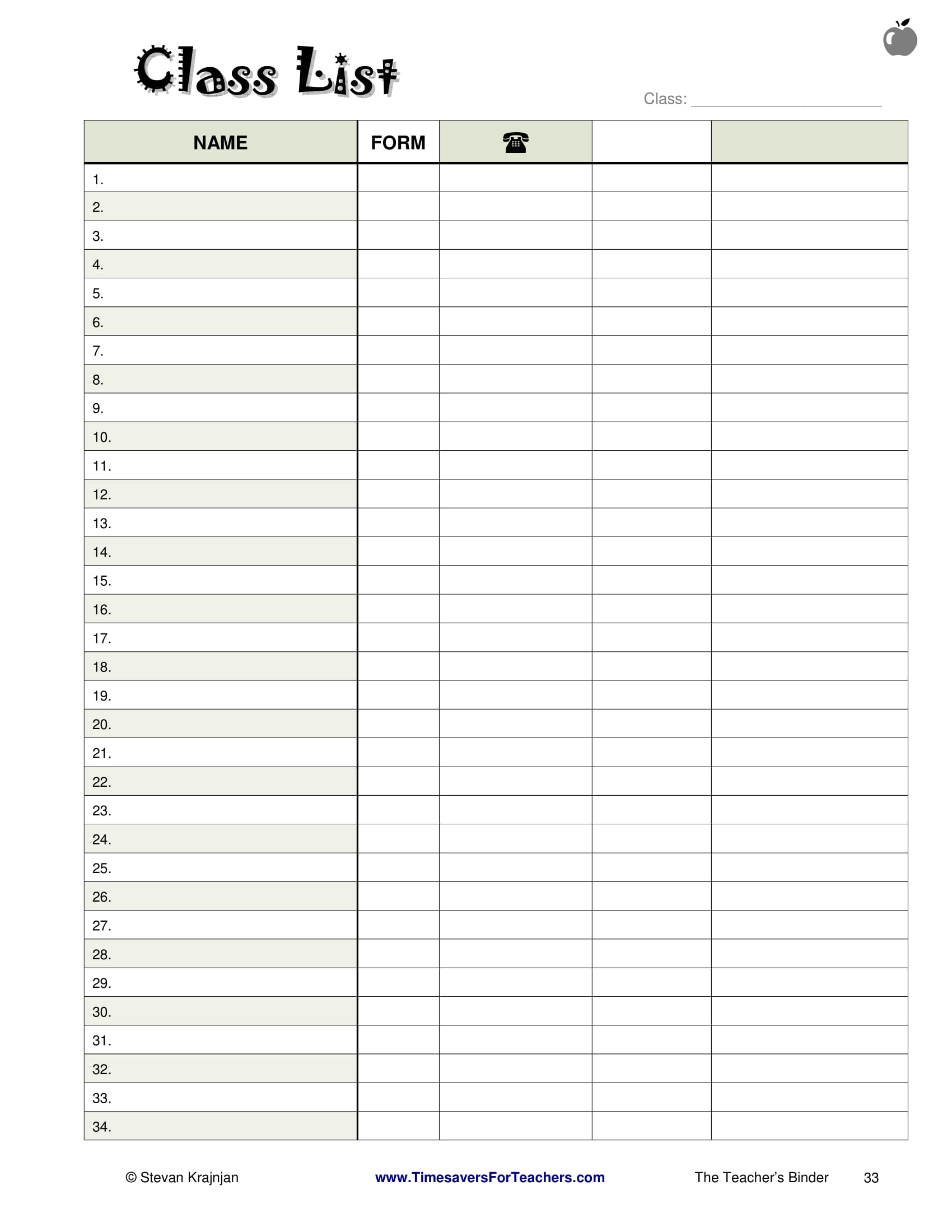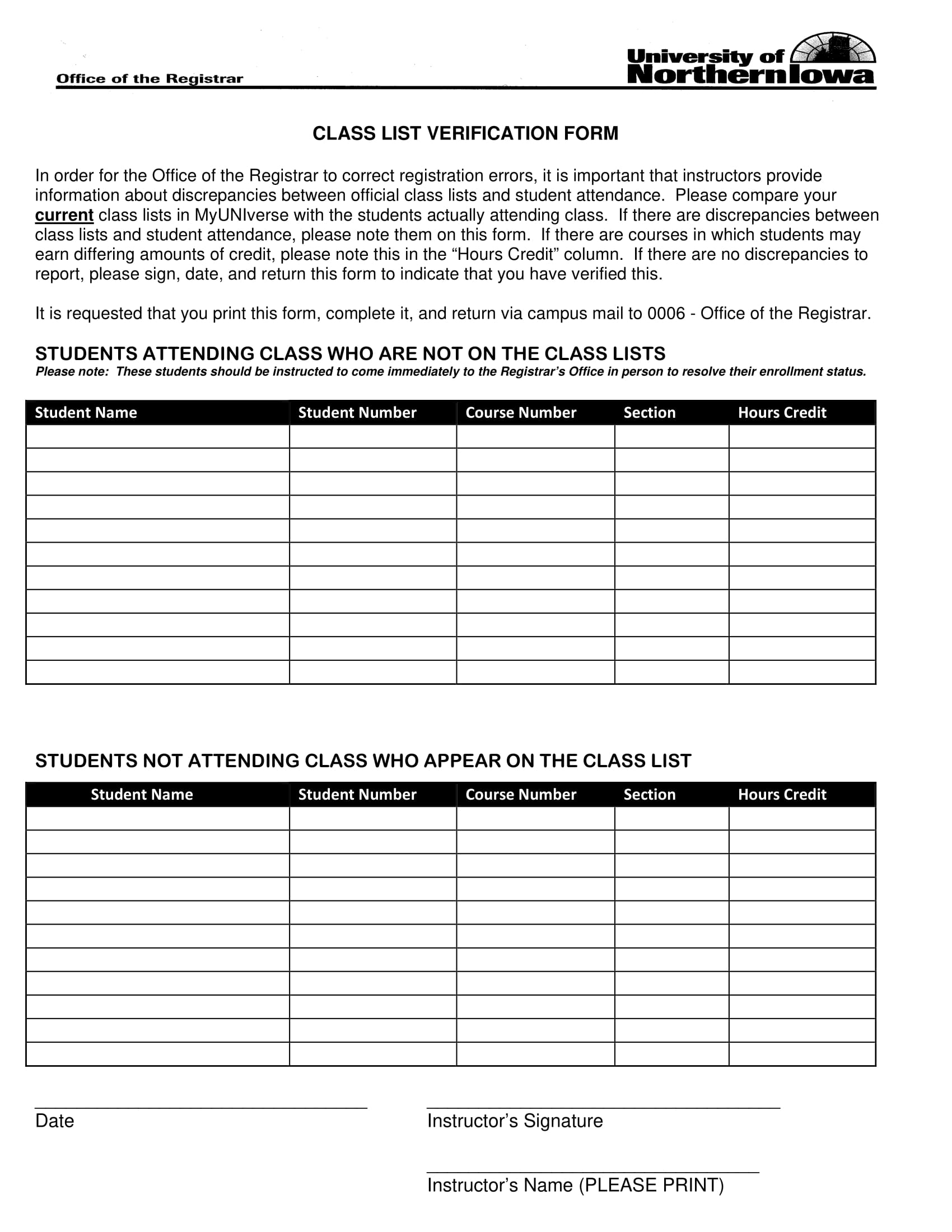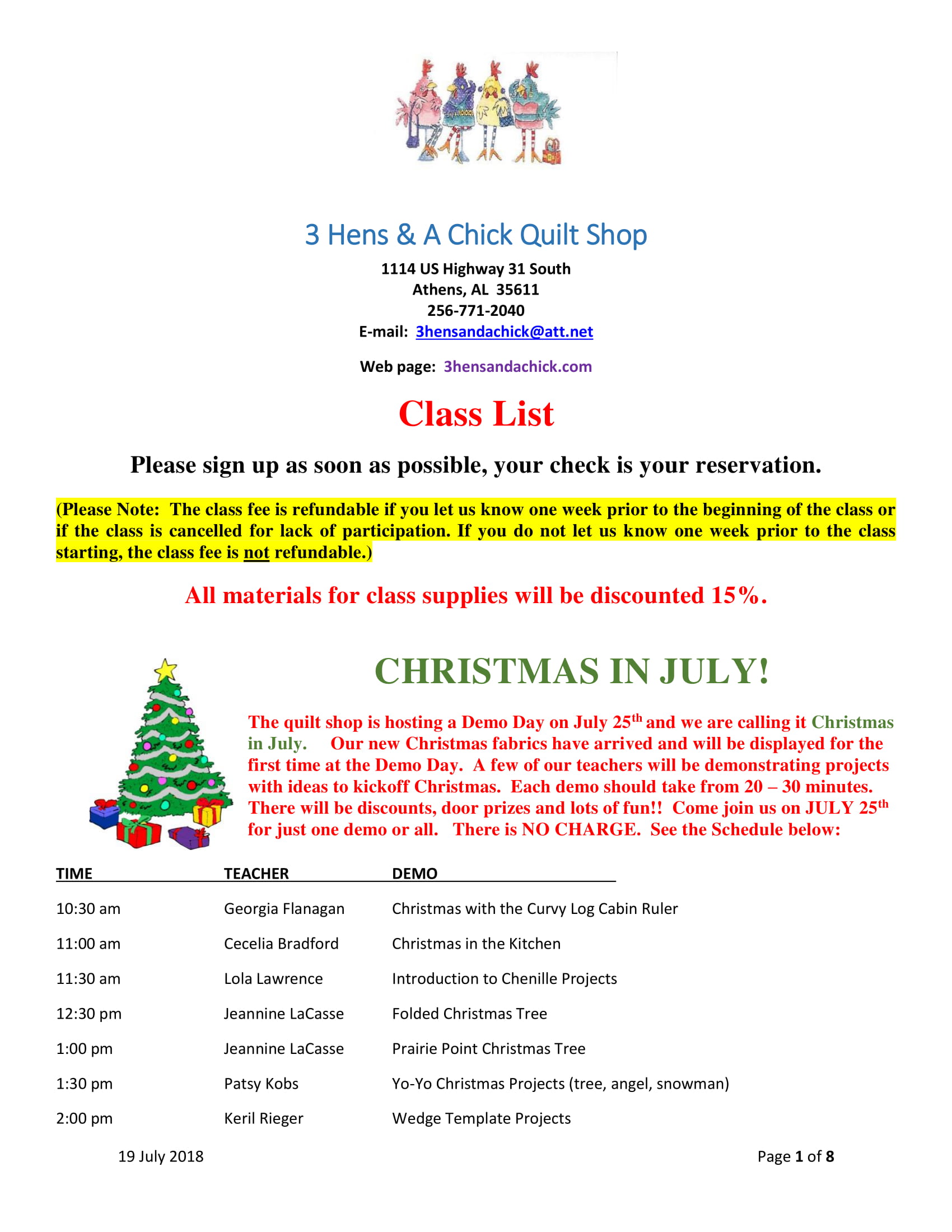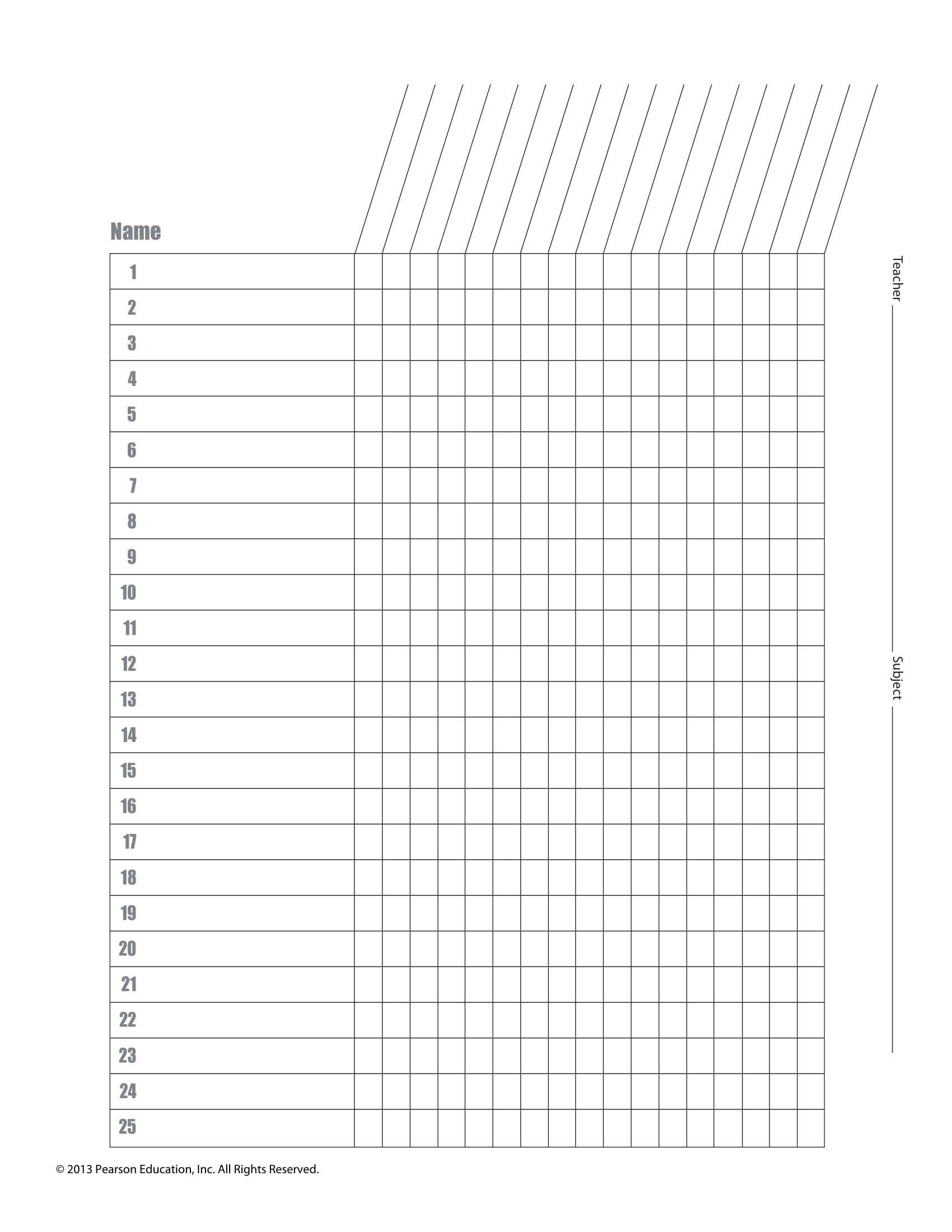12+ Class List Examples to Download
In life there is always a need for peace and coordination; if there is none of those, there will surely be chaos. The same thing goes for teachers, there is need for organization and coordination of lesson, activities, classrooms, students, and so on. That is why teachers commonly have a pile of documents containing necessary and relevant information to the execution of their daily tasks. They have a lesson plan that contains details about their lessons for various subjects and sections. They have a list containing all the students enrolled in the class, a list of the homework and activities they assign to students and other documents significant to their job.
One of those important documents teachers have to have is a class list. A class list is a document containing the names of the students enrolled in a specific section, class, or subject. Others define a class list as a list categorizing students according to the class of honors they have obtained in their degree examination. With this definition, a class list contains a list of students divided or categorized by the honors. Although it is prevalent in the UK, the general concept of a class list is a list of students enrolled in a class; it can also be a list of classes students can enroll into.

Purpose of a Class List
With the almost overflowing number of students enrolled in an academic institution, it is important to have some sort of organization within the campus especially during classes. There should be a systematic arrangement of everything from the seat plan down to schedules down to the lessons and activities. The class does this with regards to the arrangement of students in a certain class. Listed below are the reasons why a class list is a significant document in the academe:
- It reflects the names of enrolled students within a class in order to have coordination.
- Depending on the system employed by the institution, it arranges the students based on the academic merit.
- Keeps an account of all the students in the class.
- Records daily activities and scores of students.
- Indicates assigned teacher for the class as well as subject title.
- Can be used to record and track students’ attendance.
- Can be used as reference for teacher or student’s complete name.
- Indicates the class number and/or room number occupied by the class.
- It may also contain contact information or emergency contact information for each student.
- Can accommodate or record necessary remarks from class or subject teacher.
Class List Template For 30 Students
Class List Template for Teachers
Student Class List Template
Printable Class List Template
Elementary Class List Template
Multipurpose Class List Example
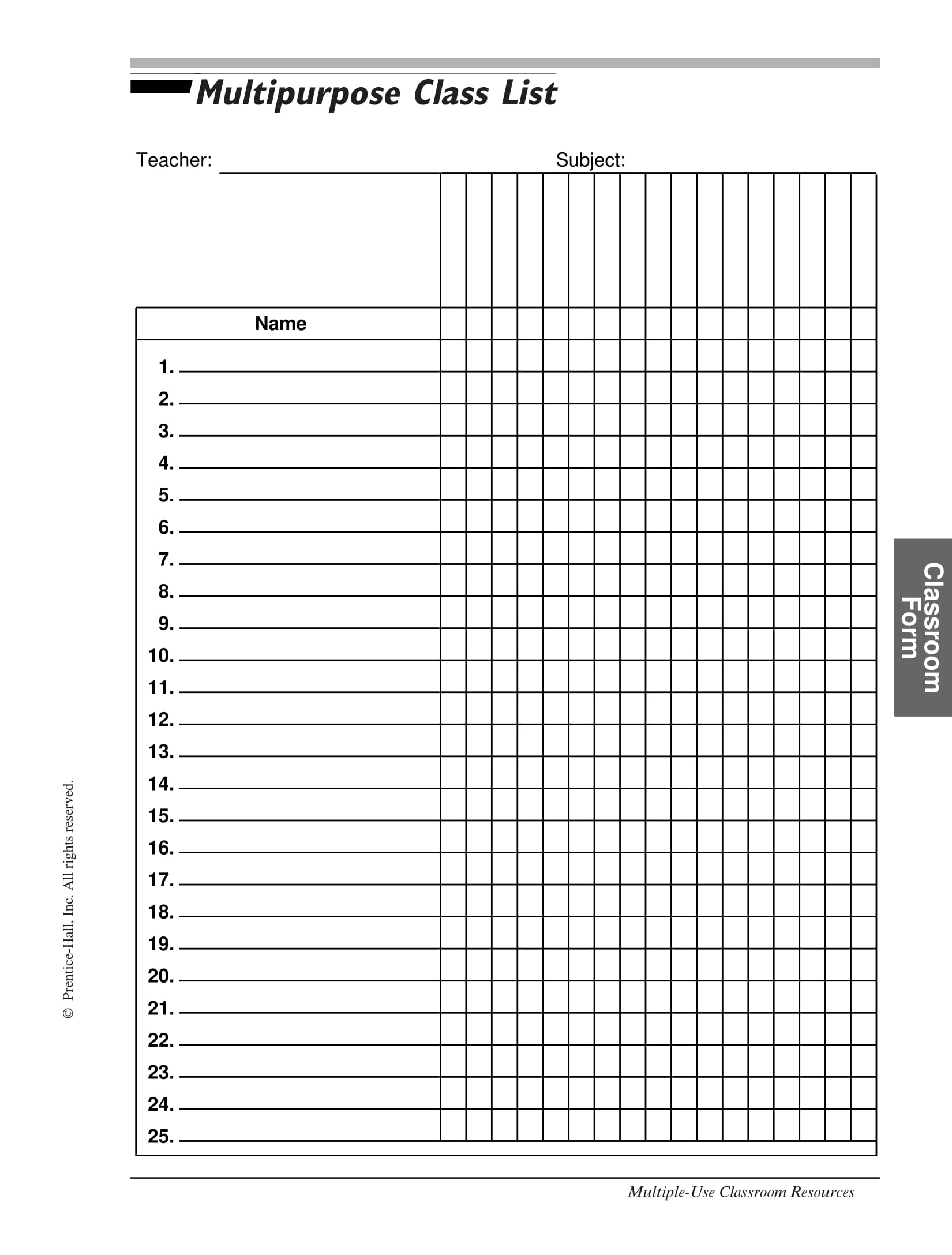
Class List Checklist Form Example
Kindergarten Class List Example
List of Classes Example
Basic Classes Taken by High School Students
Unlike in elementary where the teaching focus revolves around the fundamentals, subjects begin to become complex in high school. In order to help high school freshmen or even newly employed teachers, here is a brief background on the necessary basic subjects that are taught and taken during high school:
English or Language Arts
As a continuation of the study in English, high school students begin to study the complexity of the English language as well as the literature. In addition to that, high school students are also taught the basic of writing and speaking. It is a requirement for most states to take four years of English or Language Art classes. The main English classes in high school are:
- Literature
- Writing or Composition
- Speech
Mathematics
This is when students begin to dig deeper into several types of math. Commonly, algebra and geometry are required at most high schools, but there is an option for students to take advanced math classes. Most states require three or four years of math coursework in high school. The main math classes in high school are:
- Algebra
- Geometry
- Algebra II
- Trigonometry and/or Calculus
- Statistics
Science
Most high schools require students to take basic biology and chemistry. The included lab components allow students to perform hands-on experiments. A three- or four-year requirement to take a science coursework in high school is common in most states. The main science classes in high school are:
- Biology (typically has advanced classes)
- Chemistry (typically has advanced classes)
- Physics (typically has advanced classes)
- Earth or Space Sciences
Social Studies
It is very important for people of this age to understand how the world works. High school students study history around the world and government. They also learn about how social studies affects their lives. Social studies is required to be taken three to four years in high school in most states. The main social studies classes in high school are:
- U.S. History
- U.S. Government
- Economics
- World History
- Geography
Foreign Languages
It is important the learn a second or third language especially with the fast-paced globalization. It is a common requirement in high school to have students learn the basics of at least one foreign language and they have the option to take advanced classes in order to learn more. The most common languages offered in high school are:
- Spanish
- French
- German
Other common languages include Latin, American Sign Language, Japanese, Mandarin Chinese, and Italian.
Other High School Classes
There other various classes offered during high school; some may be required in the school’s curriculum and some are electives that students may choose. Some of these classes may include
- arts, such music, photography, or pottery;
- computer applications, graphic design, or Web design;
- physical education;
- trade field study such as auto mechanics or nursing classes; or
- psychology.
College Credit
Some high schools offer students the opportunity to be ahead from others. Students are allowed take advanced placement classes and if they pass the exam, they may test out of a basic class in college in order to earn college credits. There are also instances where some high schools offer programs that will allow students to take certain college classes and in return grant them high school credit. This means that students may help students gain some college credits free of charge.
Elementary Class List Template Example
Class List Verification Form Example
How to Manage Your Classroom
As a the teacher in charge of the class, you want to make the classroom conducive for learning. You want to give your students the equal opportunity to learn the lessons. However, there will always be things that can go out of hand or students who constantly start drama in class. To help you with that, here are some useful tips for managing your classroom:
1. Establish a Code of Conduct
It is very common for the institution to provide students and teachers a revised institutional code at the beginning of every school year. The revised institutional code contains policies for student behavior and discipline based on the district’s standard. You can then use this as a guide to create a behavioral or code of conduct that will be discussed and posted on your classroom. However, you have to carefully choose your words basing on the grade and comprehension level you know your students have in order for the code to be understandable to them. Despite that, you still need to prepare answers and explanations should students need further clarification of every rule you impose.
2. Handle discipline objectively
Although you have explained and posted your code of conduct for your classroom, there will always be inevitable disciplinary problems. With that in mind, it is not enough to merely discuss each rule, you have to also make them understand of the consequences of every misbehavior. However, you need to remember that disciplinary procedures are governed by district policies. You have to familiarize such policies for appropriate measures for dealing with disturbances and unacceptable behavior.
As you go on with your daily classes, you will become familiar with your class dynamics, thus, you can design a plan of action that is tailored specifically to their needs. In addition, second chances can be granted on certain degree of misbehavior; however, not following through with stated consequences will only undermine your authority. There should be no sense of favoritism, no matter who or when it happens, there should be consistent discipline for every misbehavior.
3. Establish a routine
It is apparent that children thrive in structured environment. It is always good to encourage them to make significant use of their time; for example, students who arrive early should be encouraged to read, do a puzzle, color a book, or any significant activity. In every beginning of the school day, it is better to read through the schedule for the day so that your students know what activities to expect. With this in mind, routine does not necessarily equate to boring; it is just a warm offer of a sense of security in knowing what to expect.
4. Keep everyone busy
If you are handling kids of a younger age, it is quite hard to maintain and retain their focus on a certain activity. Thus, it is important to always keep them busy. And with the variety of students also comes a variety of skills at different stages of development, this will make it harder for you to determine how long certain activities will take. It is always better to over-plan. Produce extra worksheets that supplement the lesson being learned, design a short quiz that summarizes key concepts in the lesson, and plan additional craft or activities that will keep them interested in the lesson.
Demo Class List Example
Printable Class List Template Example
Tips to Conduct Successful and Effective Classroom Discussion
Although every student has a textbook that serves as a guide on the lesson, some may find it harder to learn the lesson than others. It is important that you take into consideration other learning such as behavioral, peer, observational, creative, and other skills like communication and group dynamics.
Remember that a student’s overall development depends on the teacher’s attitude, methodology, and professionalism. With that in mind, here are some tips you can refer to in order to conduct a successful and effective classroom discussion:
- Start good and enthusiastically.
- Conduct the discussions in open bright places.
- Give students the opportunity to choose the topic.
- Invite interesting and knowledgeable guests.
- Always encourage active participation minus the intimidation.
- Keep track of seating arrangement.
- Acknowledge and reward well-performing students.
- Add fun elements to your discussions and activities.
- Establish rules and regulations for your discussions.
- Encourage example-based talking that directly relates to a student’s answer.
- Keep watch on your attitude.
- Do minimum talking; maximize students’ chance to take the podium.
- Always end discussions on a positive note.
- Actively record entire session for in-depth analysis and feedback.
Teaching will always be a noble profession. It is a tough and demanding job; however, when you know you have done the best you can, and it shows on your students’ progress, it is the most fulfilling feeling you can ever have. We hope you have learned something about class lists and overall class decorum with the help of this guide.


